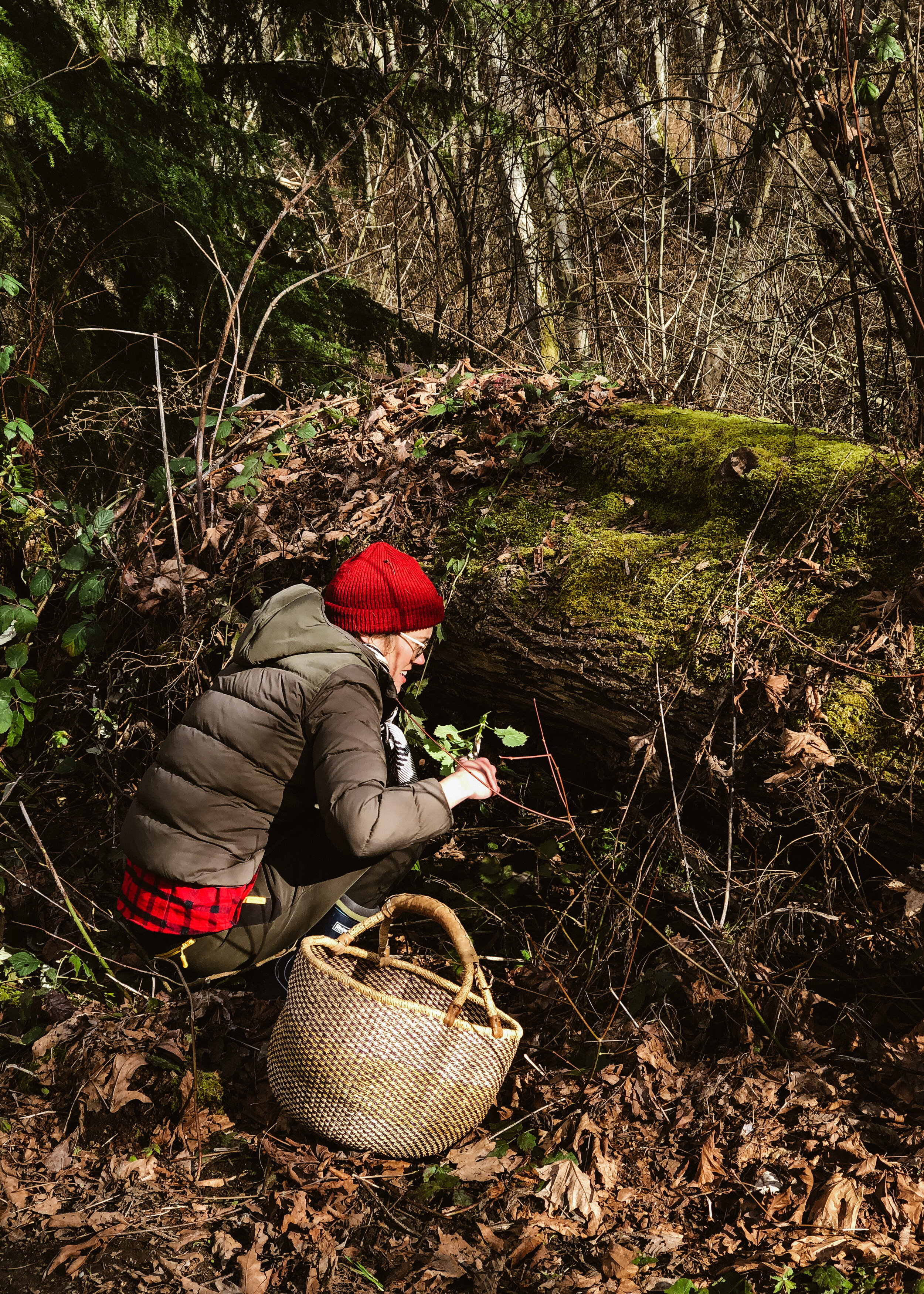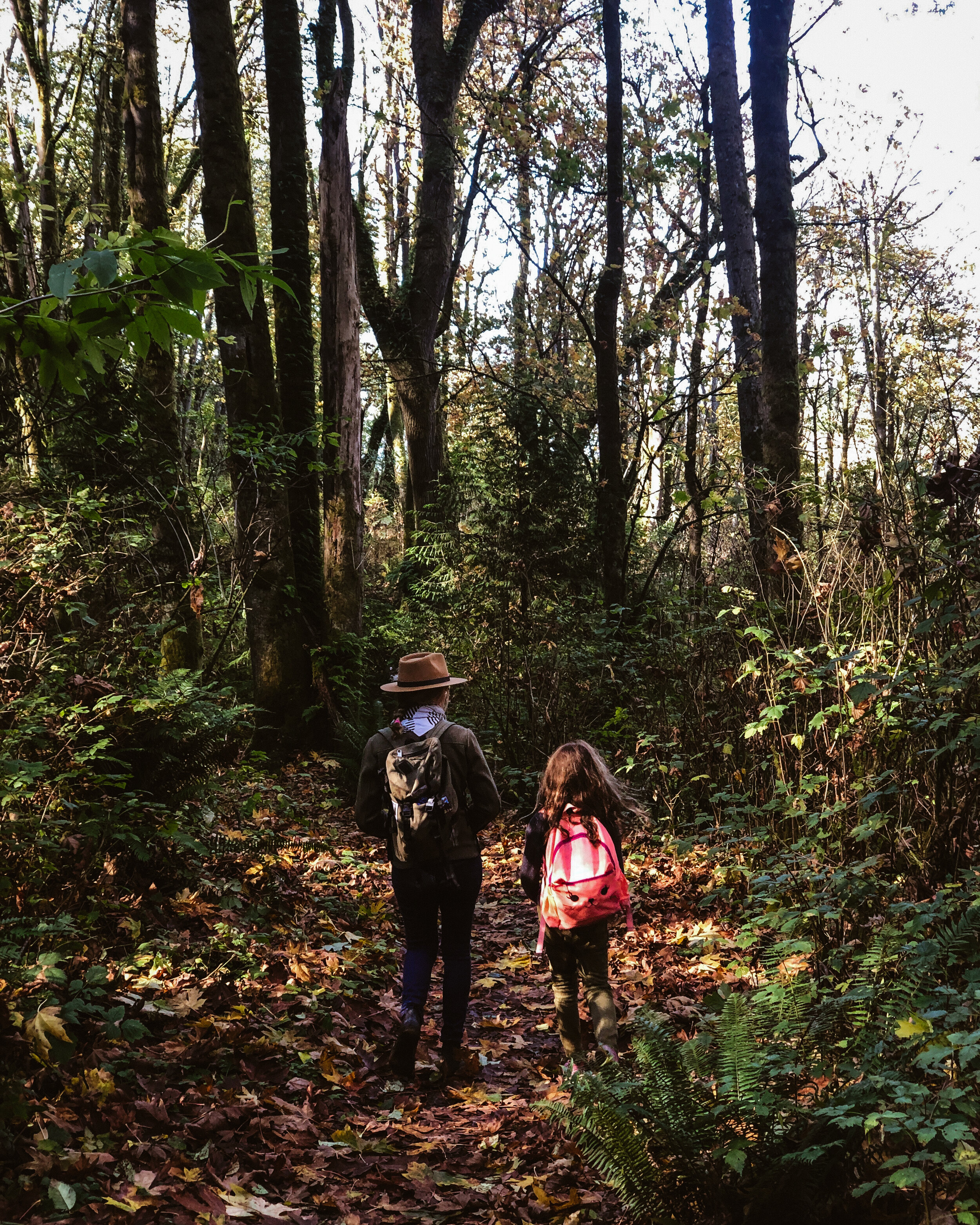The nettles are just starting to arrive here in the pacific northwest. For me this is the first of the spring wild greens that pull me out of hibernation and begin the long and thrilling season of foraging.
Nettles were the first wild food that I foraged with confidence and utter delight. What I was deemed an utter nuisance in the plant kingdom having many painful childhood memories of accidentally stumbling into stinging nettles in the woods I now shriek with delight whenever I see the first hint of purple and green leaves bursting through the frozen earth.
It is very easy to identify, readily available, and is incredibly delicious as well as being very good for you.
*Disclaimer. Of course whenever we are talking about wild foods and foraging we need to take extreme care. Never ingest anything unless you are 100% certain it is edible. Contact a reliable guide book and/or instructor before making a feast of wild foods.
How to identify
Nettles generally grow in abundant clusters and when mature they can reach up to 5 feet.
The leaves are soft and along with the stem they contain little hairs all over. We’ll talk more about those hairs in a moment.
The leaves have a serrated edge and grow directly across from one another along the stem. Later in the season the flowers cluster where the leaves meet the stem.
Young leaves tend to be more heart shaped and have a purple hue.
How and when to harvest
Urtica Dioica (stinging nettle) contain trichomes, hollow stinging hairs that are like needles injecting chemicals such as histamine and serotonin when you touch them. Lovely, right? Many people get painful, itchy and sometimes rash-like symptoms when they come in contact with the plant. For me the pain and itching goes away within 24 hours for others it’s much less.
Always harvest while wearing sturdy gloves. I tend to snip the young plant with scissors then use the scissors as a sort of tweezers to transfer the nettles into my gathering basket.
The best time to harvest is late winter/early spring when the plant is no larger than 1 foot. The leaves are tender and even the stems can be used when collected this early.
I generally cut the young plant near the dirt and try to get them when they are 6-8 inches tall.
Although nettles are widely available I still practice foraging courtesy; leaving some for the earth and the next wild food lover.
Why eat it
For me it’s always first and foremost about flavor and nettles are simply delicious. They are earthy, a bit peppery and have a grassy, green tea-like flavor. Lucky for us they are also one of the most nutritious greens boasting with loads of vitamins (A, C, K and B) and minerals (calcium, iron, magnesium and more!).
How to eat it
I’ll be sharing a recipe here very soon but for now I’ll say that first of all I love using some from my very first harvest to make a tea. It’s become a bit of a ritual for me as I welcome in nettle season. It’s still quite cold in the pacific northwest when nettle season begins but the hit of a grassy, herbaceous and nutritious warm tea reminds me that spring is indeed coming.
I’ve dried the leaves for nettle tea all year long and recently Langdon Cook told me that he loves to add dried nettles to soups as you do dried herbs.
Drying or blanching nettles will remove the sting. Bring a large pot of salted water to a boil then dunk the nettles into the water for at least 10 seconds. Some recommend 30 or even a bit longer but Langdon promises us that 10 seconds is all you need.
Have a large bowl of ice water nearby to immediately stop the cooking and to keep the bright green color.
Use nettles as you would spinach. It’s lovely in soups, baked goods, in pasta doughs and it makes an incredible pesto.
Once the nettles have been blanched, chilled, squeezed tightly to remove the excess water and roughly chopped it freezes beautifully.
As always we welcome any tips, corrections and recipes you may also want to share.




